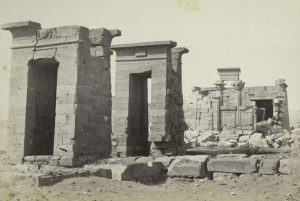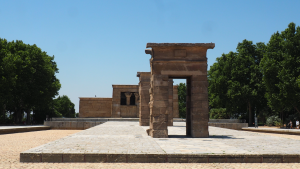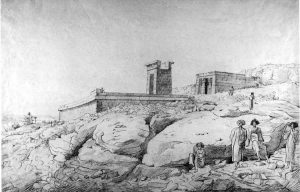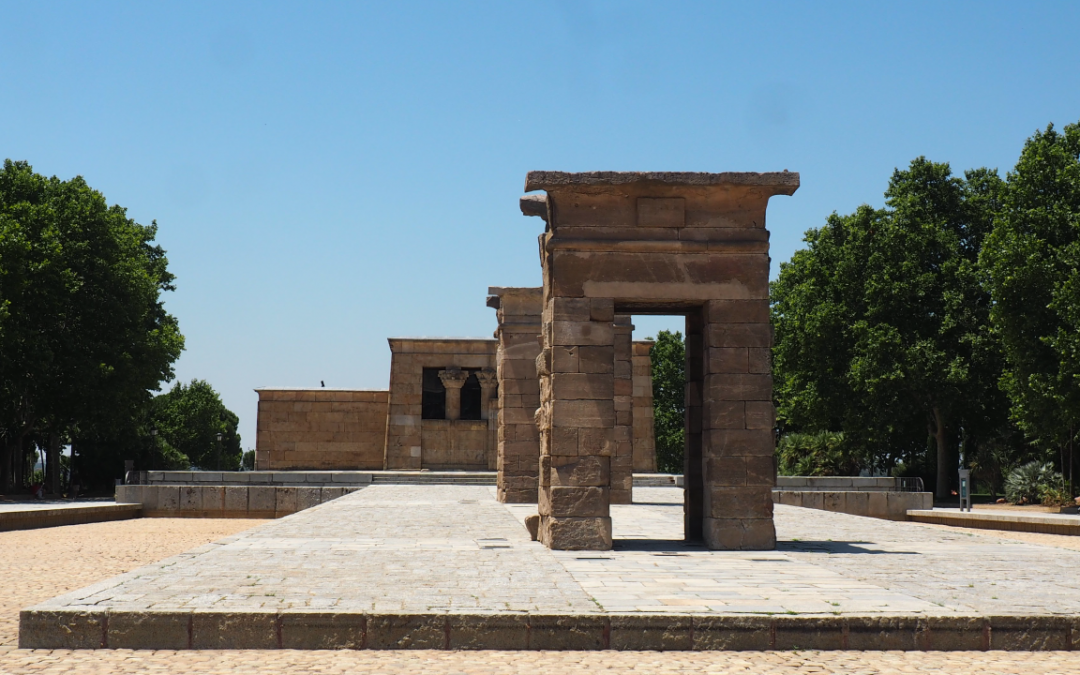In the middle of Spain is something that seems very out of place. It is a genuine Ancient Egyptian temple, built thousands of years ago. Today it is a tourist attraction in Madrid. But that’s just part of it’s history. So how did the temple of Debod come to be here?
The Temple of Debod

In 200 BC a small religious site was constructed to honour the goddess Isis. It was very small and reasonably remote, but close enough to Aswan to become something of a pilgrimage site. Coming centuries would see coming rulers transform the site. It grew larger, becoming the Temple of Debod. When Egypt fell under the influence of the Roman empire, Roman generals and even the first emperor of Rome Augustus took a liking to the temple of Debod. He actually added to the temple, sending decorations to become part of it.
Unfortunately, this popularity faded. With the passage of time working as it does, the temple of Debod was eventually abandoned and left to fall apart. Many centuries of it being slowly reclaimed by the desert and eroded by sand storms. Historically speaking… you could say it fell off the radar, largely being forgotten. It would stay this way until the mid 20th century.
Revival

During the 1960s Egypt had a tense relationship with most of Europe, especially Britain and France. Just years before, Britain and France had intended to go to war with Egypt and possibly overthrow the Egyptian government. The same government was still in power and isolated by many Western nations. But not all were like this. Spain maintained a good relationship with the country. They had no colonial interest in Egypt but maintained other interests from commercial and diplomatic purposes. For decades, Spain had been helping Egypt preserve historical sites. Egypt would now find a way to repay them.
With a massive dam being build on the river Nile, flooding was sure to follow. But the area to be flooded was home to numerous incredible historical sites. The dam was judged a necessary development but the local historical sites were far too valuable to be destroyed. And so it was decided they would be relocated, carefully taken apart to be transported and rebuilt elsewhere. Some were taken to other parts of Egypt. Others were given away to a select few foreign nations. One of such was Spain, given the Temple of Debod as a symbolic friendship between them and Egypt. Other nations chosen were America, Italy, and the Netherlands. Each were given their own ancient temple with a unique and rich history.
Each were rebuilt again in their new nations, in the exact nature they have always stood. That is how an ancient Egyptian temple now stands in the middle of Madrid. It’s an incredible story, one that few people who even visit the temple of Debod actually know. It is one of just a handful of ancient Egyptian temples outside of Egypt itself. A very rare sight, and free to visit. It took two years for the temple to be rebuilt in Madrid.
Temple of Dendur

Another interesting temple is the one given to America roughly the same time as this. I speak of the temple of Dendur. This was actually built by the Romans while they ruled Egypt. Again it was during the rule of Augustus that the temple of Dendur was erected. He understood the value of grand monuments, commissioning them across the empire to be built in local styles. It was a tactic to seduce a disparate array of religious and ethnic groups to respect him as their ruler.
The beauty of the temple acted as a beacon to travelling European artists in the 18th and 19th centuries. Then in the 1960s, it was faced by the same disaster. It was located in what would become Lake Nasser – the body of water created by the dam. And so, the temple of Dendur was gifted to the United States. After long consideration over which city would receive it, the temple was rebuilt in New York, where since 1978 it has been on display at the Metropolitan museum of Art. As mentioned before, another two of such temples exist in Italy and the Netherlands, with their own beauty and histories.

